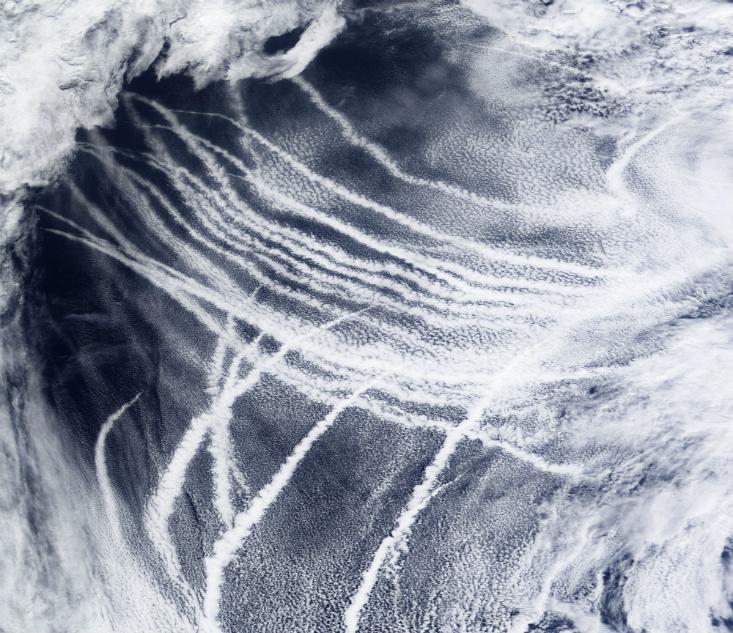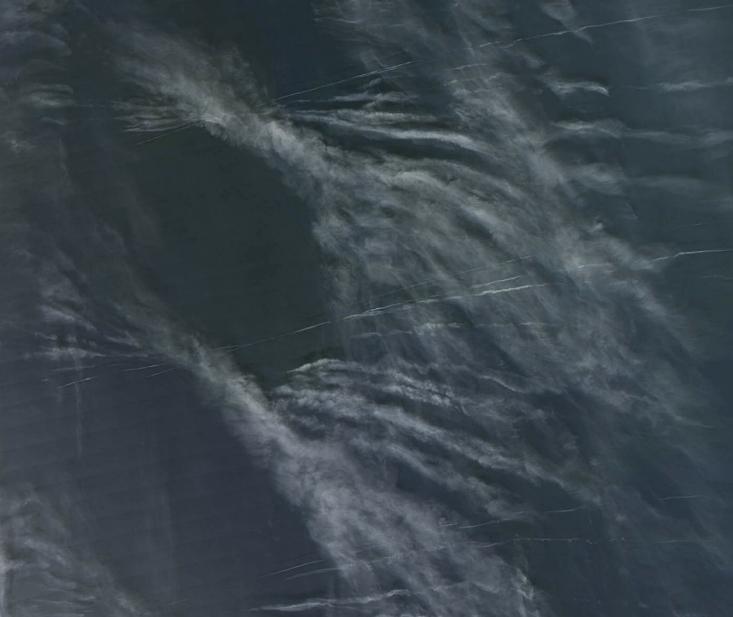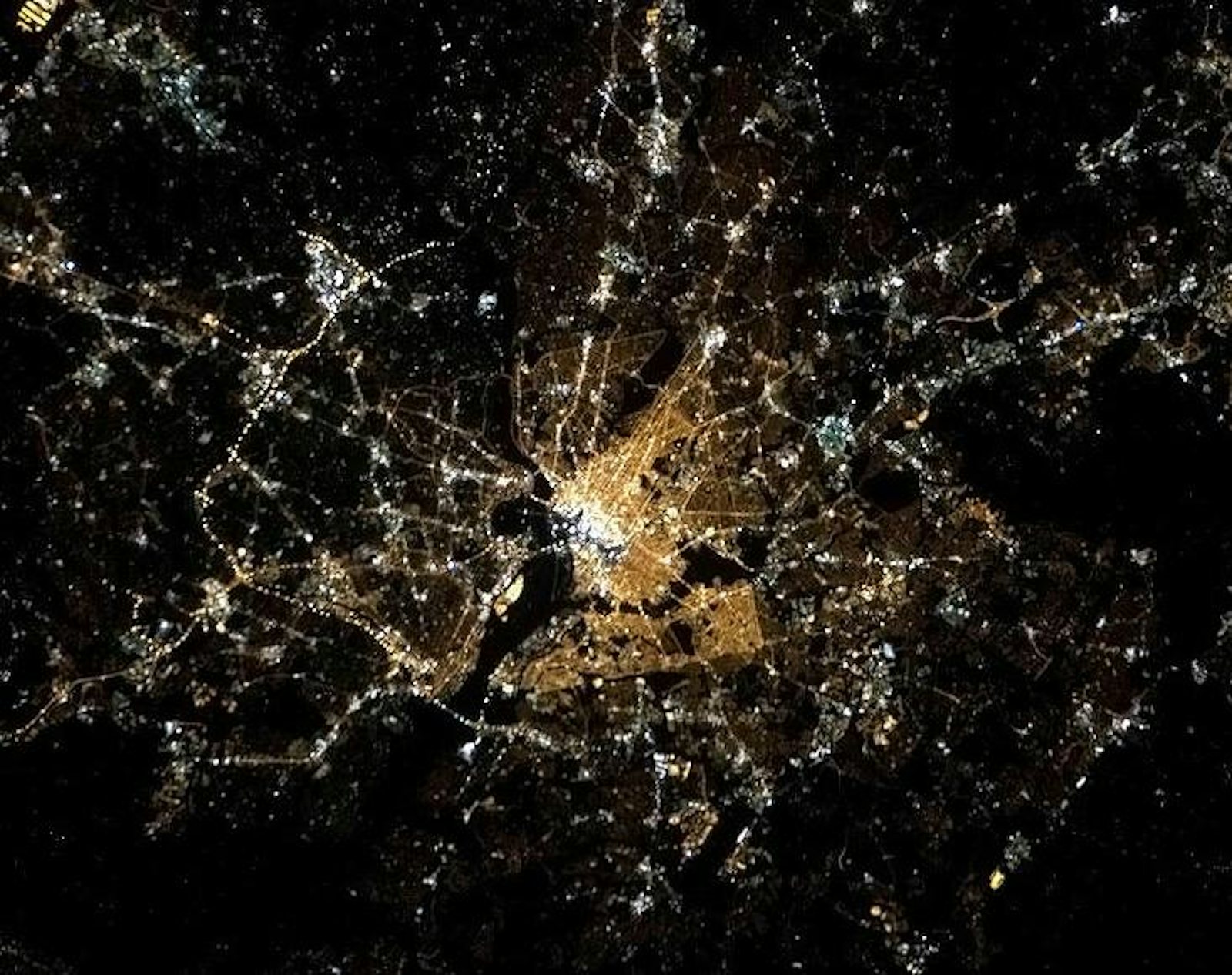Should extraterrestrials be looking down at Earth from space, they would know a few things about us humans. They would know our routines are dictated by the sun. They would see that we tend to congregate and build near water. But perhaps most of all, they would know that we move. Today’s world is an interconnected one. A customer in the United States can order a shirt from Tokyo and have it in a day. A family can visit cousins across the globe. We ship meat, and presents, and people at a massive rate and volume. And it shows. Much of our transportation can indeed by seen from space, and here are some of the most striking images to prove it.

This orange image, from NASA’s Aura satellite, shows how shipping traffic can actually create cloud layers from the particles and gasses emitted by ships. (See “The Box That Built the Modern World” for more about how the global shipping system works.) Much of this signal comes from nitrogen dioxide (NO2) in engine exhaust. And while ships cross through almost all parts of the oceans, the line seen in this image is so distinct because it is one of the narrower, most concentrated routes (between Sri Lanka and the Malacca Straight, a path highlighted in the video below), and moves across what is generally pristine air.

To get a sense for the scale of shipping around the world, watch this video showing the routes and concentration of shipping traffic as seen from space.

It’s not just above the water that ships visibly change their environment; sometimes they leave their mark below the surface as well. This NASA Landsat image shows the trails left by trawlers, boats that scrape nets along the seafloor to catch things like shrimp and other bottom dwellers. Their routes—in this case, off the shore of Louisiana—can often be seen as mud trails or lines across the ocean floor.

Ships, of course, are not the only way humans travel. These long rope-like clouds are caused by airplanes crossing near Newfoundland, Canada. How long these contrails last depends on how warm and humid the air in the atmosphere is. Dry air doesn’t hold clouds for long, while wet air means the contrails can stick around for as long as 14 hours.

When it comes to moving themselves, rather than cargo, the transportation path humans partake in the most is the road. Car lights are visible from space, and there are a few particularly clear images of our winding interstates. Above is a photograph taken by Commander Chris Hadfield from the International Space Station as it passed over Washington D.C. Brazil’s capital, Brasilia, is equally bright.
NASA’s Earth Observatory has a whole collection of images of our Earth at night. We’re putting on quite a show for whatever might be observing us from afar.






























